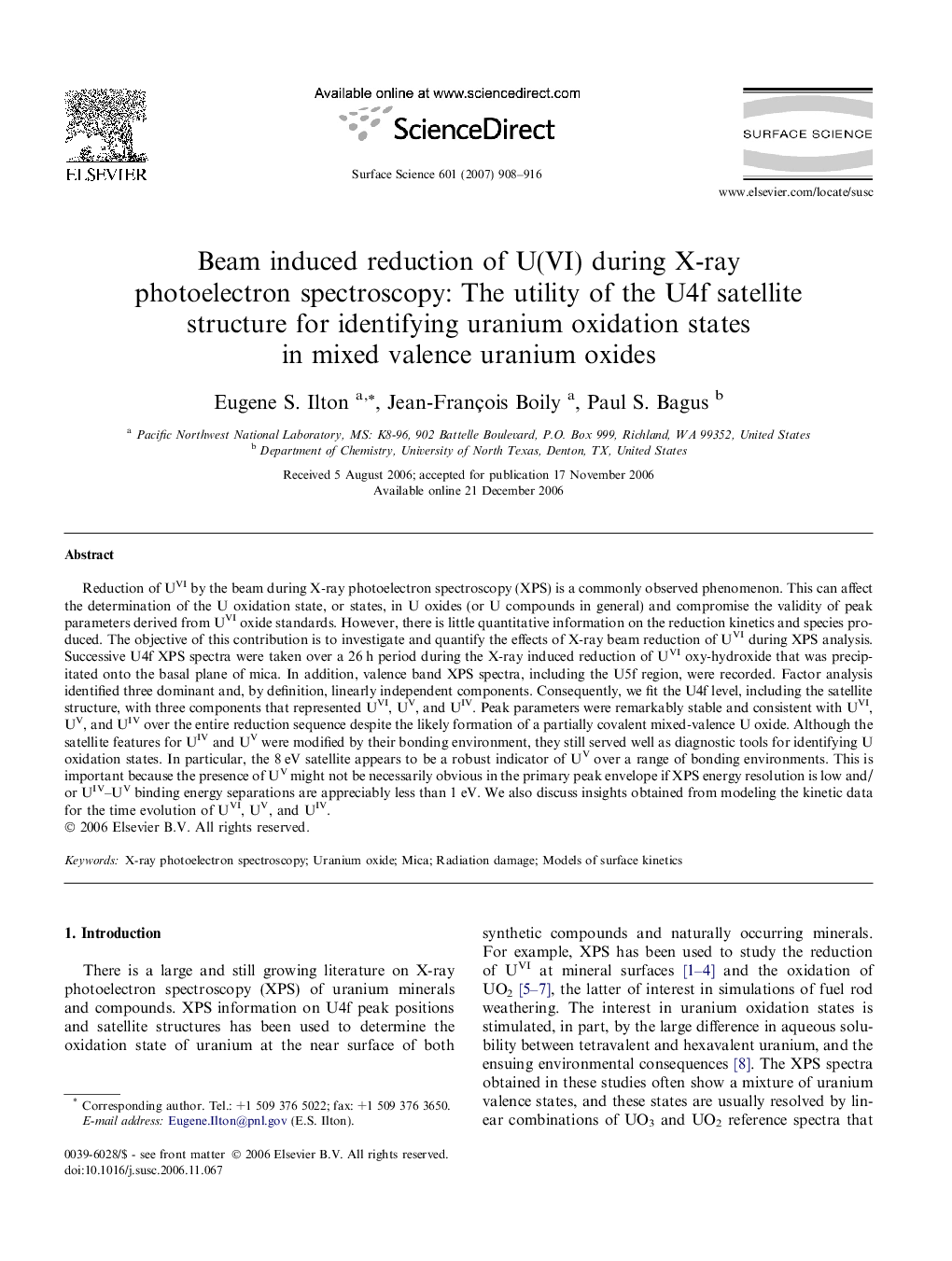| کد مقاله | کد نشریه | سال انتشار | مقاله انگلیسی | نسخه تمام متن |
|---|---|---|---|---|
| 5425194 | 1395850 | 2007 | 9 صفحه PDF | دانلود رایگان |

Reduction of UVI by the beam during X-ray photoelectron spectroscopy (XPS) is a commonly observed phenomenon. This can affect the determination of the U oxidation state, or states, in U oxides (or U compounds in general) and compromise the validity of peak parameters derived from UVI oxide standards. However, there is little quantitative information on the reduction kinetics and species produced. The objective of this contribution is to investigate and quantify the effects of X-ray beam reduction of UVI during XPS analysis. Successive U4f XPS spectra were taken over a 26Â h period during the X-ray induced reduction of UVI oxy-hydroxide that was precipitated onto the basal plane of mica. In addition, valence band XPS spectra, including the U5f region, were recorded. Factor analysis identified three dominant and, by definition, linearly independent components. Consequently, we fit the U4f level, including the satellite structure, with three components that represented UVI, UV, and UIV. Peak parameters were remarkably stable and consistent with UVI, UV, and UIV over the entire reduction sequence despite the likely formation of a partially covalent mixed-valence U oxide. Although the satellite features for UIV and UV were modified by their bonding environment, they still served well as diagnostic tools for identifying U oxidation states. In particular, the 8Â eV satellite appears to be a robust indicator of UV over a range of bonding environments. This is important because the presence of UV might not be necessarily obvious in the primary peak envelope if XPS energy resolution is low and/or UIV-UV binding energy separations are appreciably less than 1Â eV. We also discuss insights obtained from modeling the kinetic data for the time evolution of UVI, UV, and UIV.
Journal: Surface Science - Volume 601, Issue 4, 15 February 2007, Pages 908-916